Guitar frets are one of the key pieces of your guitars anatomy, so it’s important to know what they are. But, here’s something interesting: if you were to ask a bunch of different guitarist what guitar frets are, you’ll get one of two answers – and both answers would be right!
Guitar frets are metal strips that are placed on the fretboard of a guitar to change the pitch of the guitar string. The term “fret” also applies to the spaces on the fretboard between the metal strips. This fret is where the finger is placed when playing a note.
So, let’s look at what guitar frets are in more detail: how they work, and some common problems with them (and how to fix them!).
You can use these links to jump to a section:
- What is a guitar fret?
- What are guitar frets made of?
- What are the different fret shapes?
- What are some common problems with frets?
What is a guitar fret?
Frets are the thin metal strips on a guitar’s fretboard that change the pitch of a guitar’s string. They’re most commonly made of nickel silver or stainless steel.
The section of fretboard between these metal strips is also called a fret, and is where your fingers are placed when playing. These frets are numbered, which is used to help guitarists find a position on their fretboard.
For example, the gap between your guitar’s nut and the the first metal strip is called the “1st fret”. Between the first metal strip and the second metal strip, you have the “2nd fret”. The next gap is “3rd fret”, and so on. You’ll see this most often used in guitar tabs.
As you place your finger on each consecutive fret, the pitch increases, resulting in different notes on the chromatic scale.

How do frets work?
Guitar frets work by changing the length of your guitar string. Placing your finger on the fretboard pushes the string into the metal fret wire. This shortens the length that the guitar string vibrates, which changes its pitch. The shorter the length of string, the higher the pitch.
The distance between frets depends on a guitar’s scale length, which is the distance between the bridge and the nut. Guitars with a shorter scale length, like a Les Paul, have frets closer together compared to a Stratocaster.
Frets are mathematically spaced apart to produce semitones, which are the building blocks of all western music. As there’s twelve semitones in an octave, the notes begin repeating themselves at the 12th fret.
Most fretboards have markers that indicate the fret number. There’s a marker on the 3rd, 5th, 7th, and 9th frets. The 12th fret has two markers to indicate the octave. The markers then continue on the 15th, 17th, 19th, and 21st frets.
Fun fact: Originally, guitar-like instruments didn’t have frets. But, as western music developed, players required better precision for training, performing and playing chords – so, frets added over time!
What are guitar frets made of?
Guitar frets are most commonly made of nickel silver which, despite its name, doesn’t contain any silver at all. In fact, nickel silver is an alloy – a mixture of nickel, copper, and sometimes zinc. The alloy makes it both durable and easy to work with to form the fret shape needed to be effective.
However, other fret materials like stainless steel and “EVO Gold” can also be found on guitar fretboards.
Stainless steel is a much more durable material than nickel sliver, which makes it a great choice for guitarists who don’t want to change their frets too often.
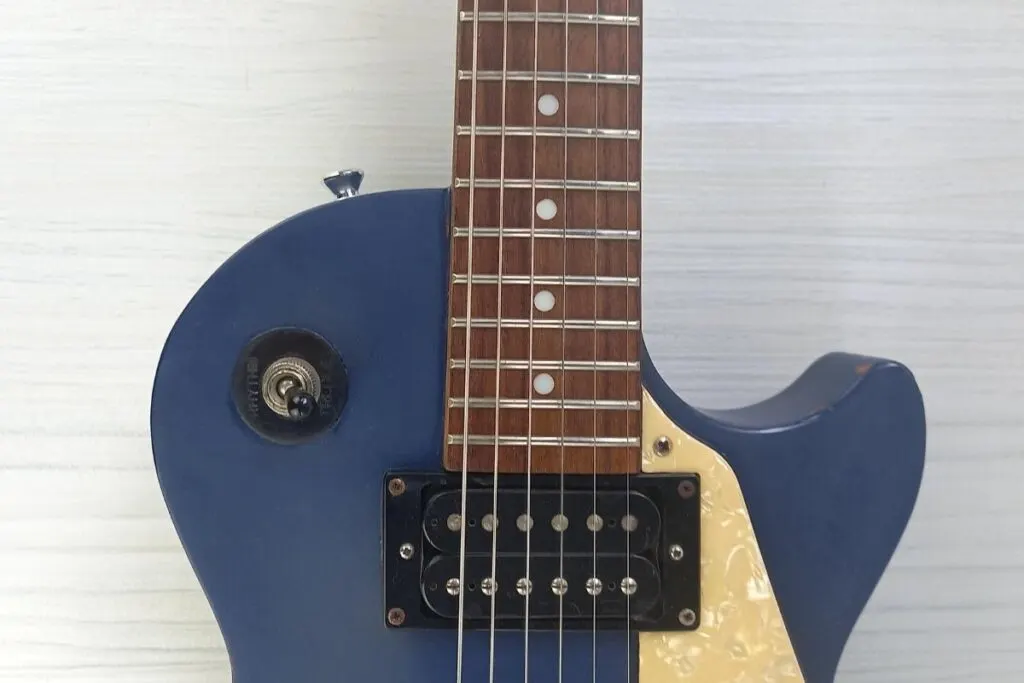
That being said, stainless steel is much harder to work with, meaning that it costs more to manufacture and fit. So, if you do get any dents, it’s going to cost more to repair than nickel silver.
Stainless steel frets are also much harder on your guitar strings. This means that your guitar strings will wear quicker against these frets.
Besides nickel silver and stainless steel – there’s “EVO Gold” frets. This might sound unfamiliar to many guitar players, but it’s a popular nickel-free option for people with allergies. Some argue that it’s both hardier than nickel and easier to shape than steel, making it a good “best-of-both” alternative.
Fun fact: Years and years ago, guitar strings were made of sheep gut and the fret was made from bone! Gut strings are still used on classical guitars today.
What are the different fret shapes?
As with anything; guitar frets have had various changes and improvements since their original creation. The first type of fret invented was the “bar fret”. This fret had a rectangular back and side (the “tang”) with a rounded, “crowned”, top.
As guitars continued to develop and progress, the “T-fret” was introduced, which are the industry-standard for guitar frets today. The T-fret, patented by Clinton F. Smith in 1927, has a domed crown top with a narrow tang that fits into thinner slots. The body has “barbs” on the side that keep the frets in place using friction.
Although the T-fret is much more popular now than bar frets, the latter is still a popular option among guitarists who want to restore vintage and classical guitars.
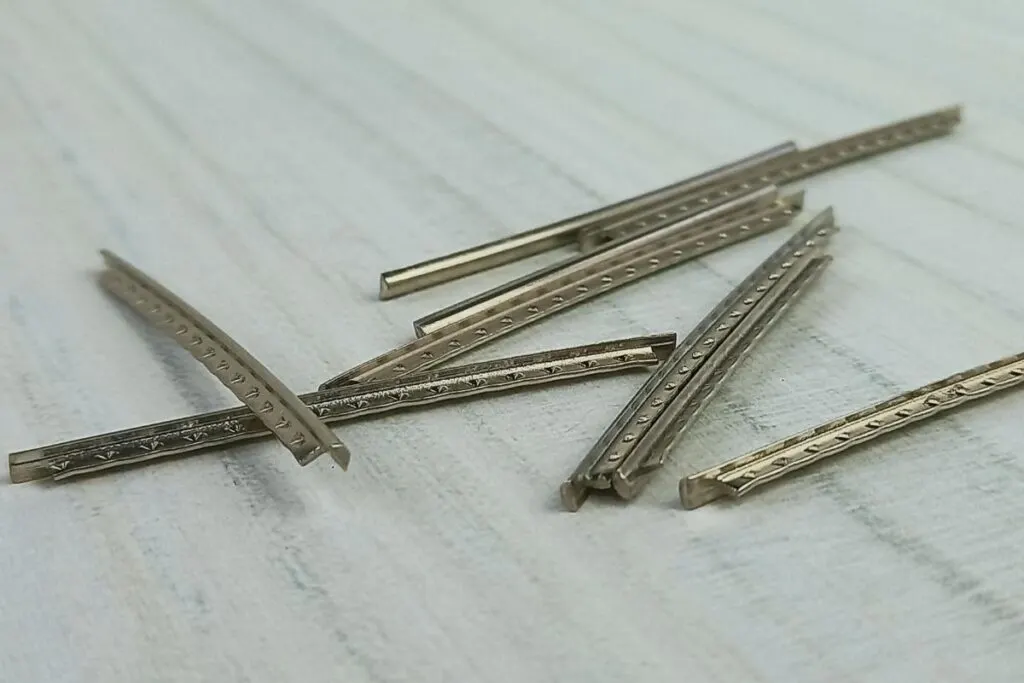
Shapes and sizes
Although the T-fret is the standard fret design, the crown of the fret comes in different shapes and sizes. This shape can affect the tone of the guitar, and its playability.
For example, “jumbo” sized frets are taller, meaning that you don’t have to push down as hard on the fretboard. A shorter fret, like a “vintage jumbo” size would need you to push harder, but are easier to play for some people. When it comes to frets and fret sizes: it’s all about personal preference.
Here’s the different fret sizes, from smallest to largest, as given by Fender.com:
- Vintage Fender (smallest)
- Vintage jumbo
- Modern narrow and tall (the current standard for guitars today)
- Jumbo
- Medium jumbo (largest)
Guitarists like Yngwie Malmsteen (Neo-metal Electric guitar player) prefer taller and thicker frets for more control when bending and vibrating the strings. On the other hand, jazz guitarists typically favor the low, narrow frets making solo notes and complex chords effortless.
Regardless of opinions on tone, each guitar player will ultimately decide what they prefer to use over time depending on their style and preference, as the playability trumps tone. So, Jumbo frets make bending and vibratos easier, and flatter frets make chord progressions easier; ultimately, your style and preference will affect the tone of the guitar.
My opinion: Personally, I’m a big fan of jumbo frets. I’ve noticed that it takes less pressure to fret a note, and there’s a bit more sustain on the note. Having said that, all my guitars use various types of frets and I enjoy playing each one.
What are some common problems with frets?
The most common issue with frets is that they develop dents over time as the strings apply pressure and wear them away. These dents, called pits, cause the strings to rattle, that causes a buzzing sound when playing on certain frets. In addition, dents can also cause an intonation problem meaning that the notes sound out of tune on the neck although the guitar is perfectly tuned.
Another issue can come from a flattened crown. Frets require domed crowns to vibrate the correct tone accurately; otherwise, it can cause the intended pitch to be wrong. This is known as an “intonation” problem.
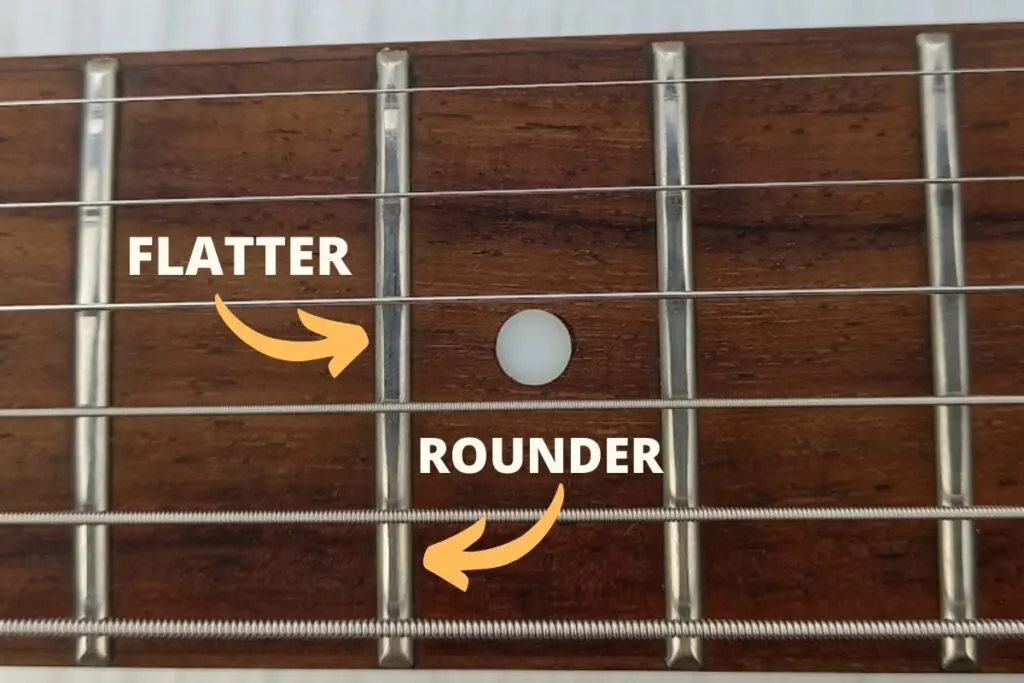
The biggest offender for causing fret damage are capos. When playing chords and shapes on the guitar, our fingers only apply a certain amount of pressure, and only for a small amount of time. Capos clamp the whole fret for the entire duration of play, applying far more pressure than our fingers. This increased pressure results in dents causing buzzing and intonation problems over time.
A simple solution to this issue is to buy a capo that provides an adjustable option. A lot of cheaper capos only have one pressure setting causing subtle damage to the guitar as they are placed on the frets. In contrast, adjustable capos allow applying the right amount of pressure for each fret, prolonging fret life.
How long do frets last?
The longevity of your fret depends a lot on your playing style, how often you play, and the fret material. Bending guitar strings add much more wear and tear on the frets than simply playing chord progressions. Likewise, stainless steel will last a lot longer than an alloy like nickel silver.
That being said: all frets wear away and will need reshaping and replacing eventually.
Fret maintenance will be in order after two years, give or take. If you start hearing a buzzing sound or suspect that you have intonation issues, it could be due to fret damage.
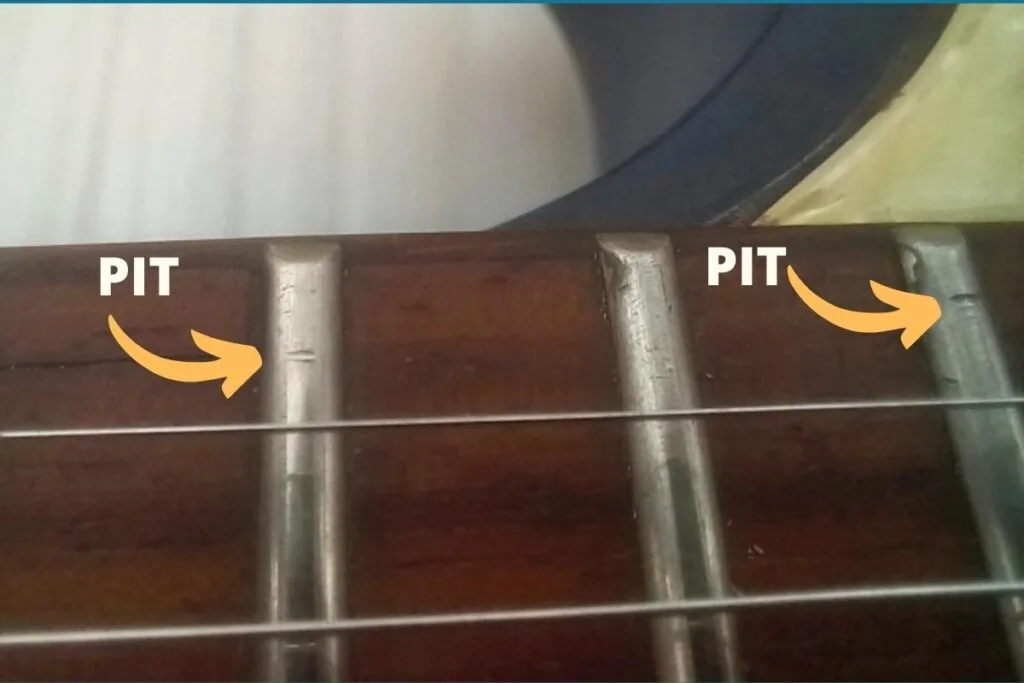
It’s important to note that jumbo frets will last longer than flat, narrow frets as luthiers can re-crown them due to their added height. Luthiers will be able to sand down higher frets as there’s more material to work with and maintain.
How do you fix a damaged fret?
Depending on the extent of the damage, professional luthiers can fix the dents, although there are various specifics you need to consider. Luckily, frets are designed to be replaceable, so any fret problem is fixable.
Firstly, “fret dressing” is an option that a luthier can use if the fret is tall enough and the dents aren’t too deep. In this process, a luthier sands down the fret until it is once again level, followed by removing the sides, called re-crown, until the edge, where the string makes contact, is narrow and ideal.
If the damage is too sever, however, the fret will need replacing – which generally costs more than a fret dressing.
While it is possible to buy the tools yourself online, I don’t recommend trying to repair or replace your own frets. This is one of the few maintenance jobs that I’d go to a professional luthier for. Often, trying to to fix your frets by yourself can end up causing more trouble!
Summary
Frets are a major component in western music as it provides an accurate measure of the chromatic scale on a guitars fretboard.
The material and thickness of the frets provide a different sound and playing experience for guitarists, meaning each guitarist will have their own preference!
Generally, frets should last around 2 years of consistent playing before showing signs of wear and tear. When they start to show damage – take them to a professional luthier for a fret dress or a replacement!
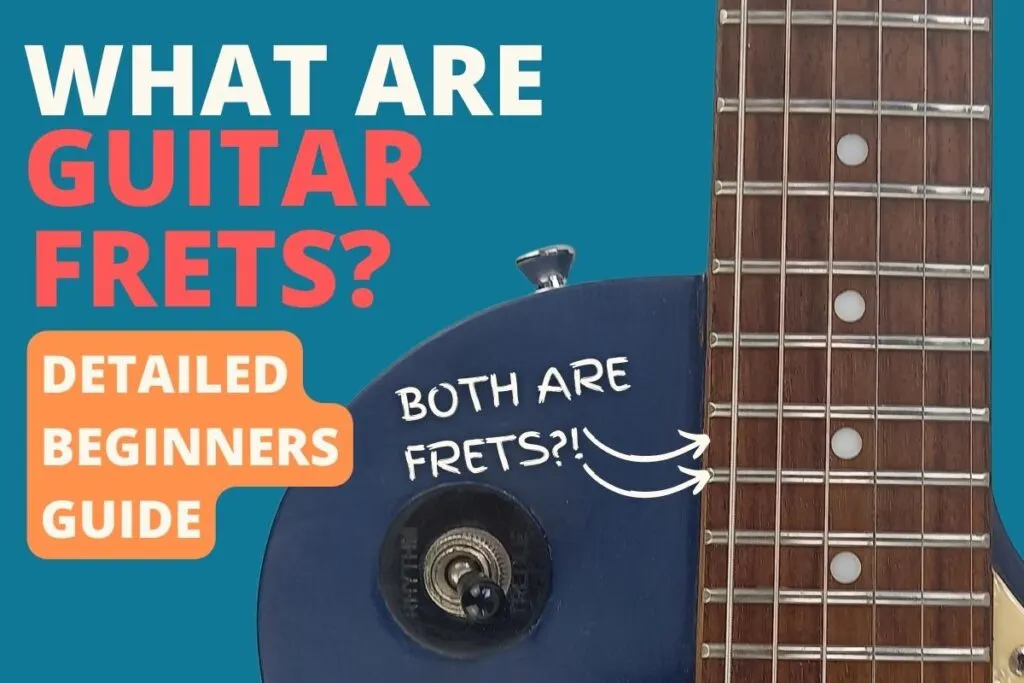

Conor is a music producer, multi-instrumentalist, and all-round enthusiast from the UK with over 15 years of experience. He’s the founder and sole-content creator for the roundtable audio blog and YouTube channel.
